Most centipedes are not harmful to pets, though they can cause a nasty bite. The most toxic are usually larger species, and these do not generally live within houses.
Contents
Are centipedes poisonous to cats, dogs, and other pets?
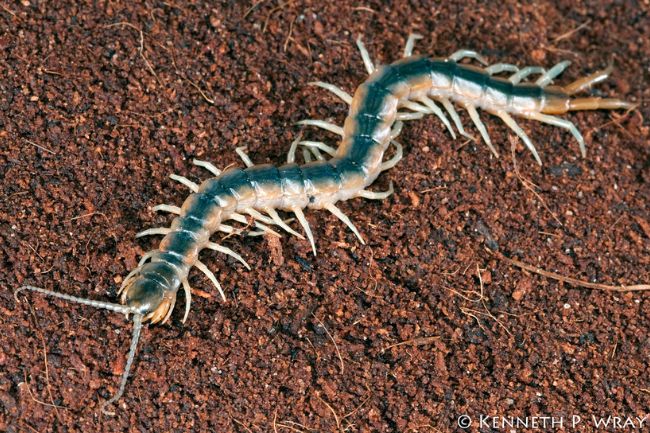
Centipedes are invertebrates with long, thin bodies and many legs. Most spend their time digging through the soil, tunnelling through leaf litter, or scurrying through cracks in rocks.
Unlike their close relatives, the millipedes, centipedes are carnivorous. However, this does not mean they intend to eat your pet cat or dog. Most species are rather tiny and, though efficient hunters, focus their efforts on smaller creatures such as insects. Some larger species, such as the Amazonian Giant centipede, eat lizards, small mammals and amphibians. However, none have an appetite large enough to feed on more significant prey, such as a pet cat.
| Symptoms | Description |
|---|---|
| Localized pain and swelling | Pets may experience pain and swelling at the site of the bite. |
| Limping or difficulty walking | Centipede bites can cause discomfort, leading to changes in mobility. |
| Excessive drooling | Some pets may exhibit increased salivation as a response to venom. |
| Muscle tremors or seizures | Severe envenomation can lead to muscle tremors or even seizures. |
| Vomiting or diarrhea | Ingestion of a centipede or severe envenomation may cause GI upset. |
In general, centipedes will avoid larger animals. They do this by spending most of their time undercover, in the soil or under rocks. However, they also avoid animals significantly larger than themselves, as they may be predators, looking for a centipede snack.
Encounters between pets and centipedes are therefore fairly rare. These are most likely to occur if your pet seeks out and disturbs a centipede in its natural habitat, generally out of curiosity. In this case, the worst-case scenario would be for your pet to eat or be stung by the centipede.
Also read: Centipedes Life Span: How Long do They Live?
Centipede stings
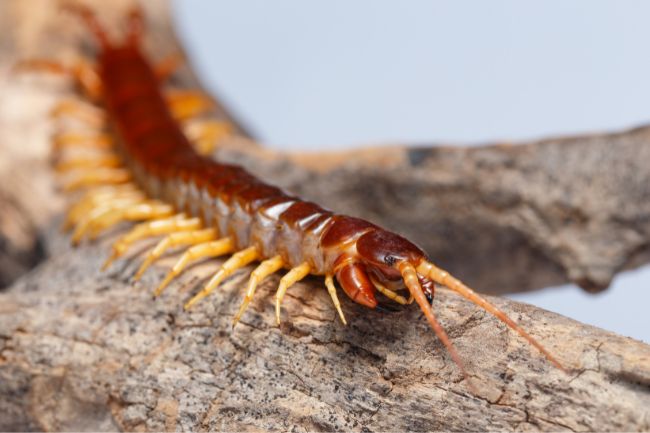
Centipedes have the ability to sting through the use of modified legs that are held up around their mouths. Many people think the long protrusions at the tail end of the centipede are stingers, but these are actually modified legs, which are designed to look like antennae. This subterfuge helps to confuse predators into attacking the wrong end of the centipede, giving it a better chance of escaping.
The fang-like legs, known as forcipules, are hollow and connected to venom sacks in the head of the centipedes. The main use of these forcipules is to inject venom into prey to help the centipede to kill or paralyse its food, however, they will also use them in self-defence, when feeling threatened by a larger predator.
A centipede will largely only sting when its attacker is at close range, this may be if it is stepped on or if the predator picks up the centipede. A common trick the centipede uses is to curl its body in on whatever is disturbing it, allowing it to grasp and sting the opponent.
If your dog, or cat, therefore, tries to bite, eat, or pick up a centipede, there is a strong likelihood the centipede will attempt to sting it in self-defence. In most species, such a sting will be a minor inconvenience, similar to an ant or bee sting. In many smaller centipedes, their forcipules simply aren’t big or strong enough to pierce the skin of larger mammals, meaning that even if they try to sting your pet, they won’t be able to.
In most cases, it will only be the larger species, that can cause significant discomfort to your pet, however, it is unlikely that a centipede sting will be enough to kill your pet.
Also read: Centipedes Have 100 Legs: Myth or a Reality (Let’s Explore)
Eating a centipede
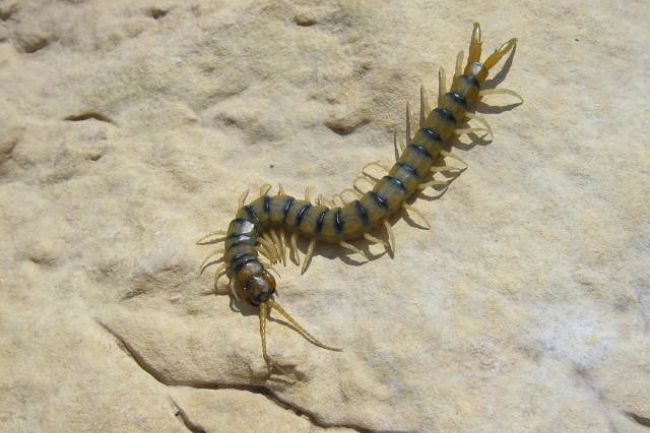
If your pet attempts to eat a centipede, it is most likely that the irritated invertebrate will bite its aggressor, and be let go. However, if your pet does manage to eat a centipede, you may be concerned about how it will affect their health.
Due to the venom they contain in their bodies, there is a risk that your pet may feel ill after eating a centipede. Most likely, your pet will throw up shortly after eating the centipede. This is the best thing for your dog or cat to do, as it will remove the venom from their body.
Even having eaten a centipede, most pets will feel no further effects. More serious effects may occur if a larger, more toxic species is eaten, however, these larger species are also least likely to be easy to eat by a house pet.
Also read: “Do Dragonflies Sting?” Are they Dangerous to Us & our Pets?
Potential symptoms
The range of symptoms your pet may experience will vary greatly depending on what centipede they have interacted with, and whether your pet is allergic to this centipede. In most cases the symptoms should abate in time, however, if they persist or get worse, take your pet to a vet to be checked out.
- Hives
- Itching
- Vomiting
- Heavy breathing
- Swelling
Centipedes that can most commonly be found in the house or around the house
Centipedes generally like dark and damp places, and there are very few species that are adapted to live in our homes, largely because they are usually too dry for them. The most likely reason for a centipede to be inside your house is because they have wandered in by mistake through an open window or door.
Your pets are therefore much more likely to interact with centipedes in an outdoor space, such as a garden or park. Even in these spaces, larger, more venomous species are rare.
Also read: Centipedes & Climbing Explained: Walls, Beds, & Much More
House centipede

One centipede that is remarkably well adapted to live around our houses, is the appropriately named house centipede. However, even this species is much more likely to occur in damper houses. These shy creatures are usually only around four inches long and do not pose a significant risk to your pets, as their bite is not serious enough to cause significant harm.
Giant desert centipede
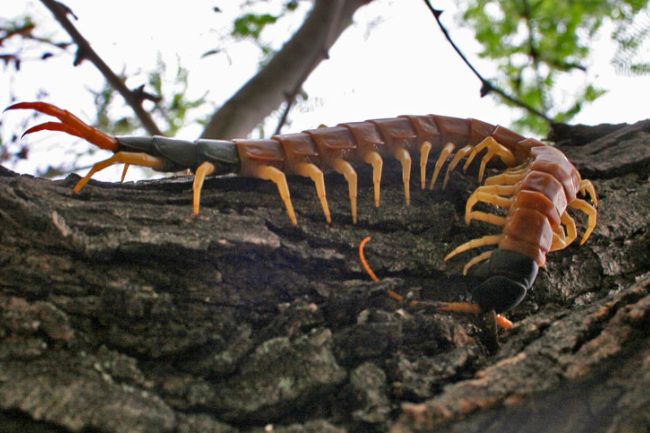
The giant desert centipede is one of the more toxic species and comes in a number of colour morphs, usually coloured black and brown. It is found in northern Mexico and the southwestern United States. The bite of this centipede is extremely painful, but it is unlikely to live within human houses.
Mediterranean Banded Centipede
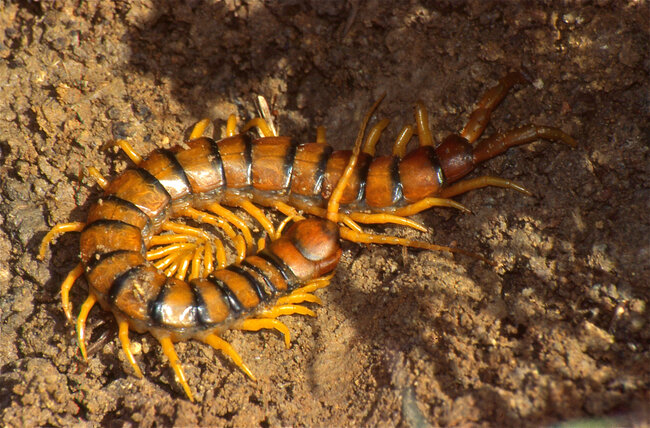
Found in Southern Europe and around the Mediterranean, this large species can grow up to 15cm long. Its brown body has distinctive darker bands, giving it its name. Although its toxins are stronger and more significant than smaller centipedes, it has a relatively mild sting compared to other giant centipedes.
As with other centipedes, its preferred home is in the leaf litter and under rotting logs, rather than in human habitation.
Also read: A List of 4 Centipedes with Red Legs
Can centipedes kill our pets?
In the majority of cases, a bite from a centipede will lead to nothing more than momentary discomfort. However, if bitten by a larger centipede species, it can be best to be cautious and consult a vet.
What to do, if a centipede bites your pet
The most important thing is to get your pet away from the centipede. Multiple bites are more likely to be harmful than one single bite. Once removed from the danger, you can inspect the bite and see how much discomfort your pet is in.
| First Aid Measures | Description |
|---|---|
| Remain calm and restrain pet | Keeping the pet calm helps prevent further agitation or complications. |
| Remove the centipede | If possible, safely remove the centipede without getting bitten again. |
| Clean the wound | Gently clean the bite area with mild soap and water or antiseptic. |
| Apply a cold compress | Apply a cold compress or ice pack wrapped in a cloth to reduce swelling. |
| Seek veterinary attention | Contact a veterinarian for further guidance and medical treatment. |
If it is a mild bite, it is likely your pet will simply lick the spot and feel a little sorry for itself for a while. If your pet is in a great deal of pain, a painkiller may be the best option to limit their distress. In this instance, it is best to consult with your vet.
Also read: Are Whiteflies Harmful to Humans? (or Pets?)
The friendly neighborhood centipede
With words like ‘venom’, ‘sting’ and ‘fangs’, being thrown around, it is easy to be concerned about the presence of centipedes in and around your home. However, it’s important to remember that most centipedes are not harmful to you or your pets, and even those that are would much rather just stay out of your way.
Centipedes are far more interested in finding their food and hiding out of sight, than causing injury to you or your pet. So if you do catch sight of a centipede, the best thing to do is to leave it alone and keep your pets out of its way. After all, its venom really isn’t meant for you, or for your furry best friend.

